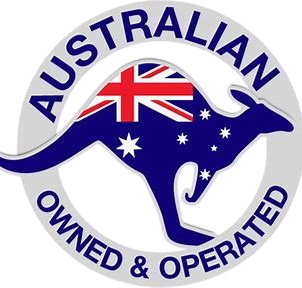We have a network of trusted freight operators across Australia to deliver your shipping containers and cabins. By partnering with local businesses, we ensure in-depth knowledge of your area and can provide efficient, cost-effective, and safe transport. Your container, delivered safely and efficiently to your site. Delivery can usually be arranged within 24-48 hours of received payment.
Delivery depends on your site, container, and truck availability. We’ll guide you through the entire process and include delivery costs in your quote. We’ll find the best way to get your container to you safely and efficiently.
For your information, we offer these delivery methods:
“Price determined by distance, transit time, and urgency.”
“To accurately calculate your delivery cost, we’ll need information about your location and delivery timeframe. Factors such as distance and urgency will influence the final price. For example, a delivery from Sydney to the Central Coast will have a different cost than a longer distance.
We’re committed to finding the most cost-effective shipping options for our customers. This includes exploring cheaper freight options like backloads when delivery time isn’t critical. Delivery costs are included in your quote unless you prefer to pick up your container directly.
Delivery Costs
***Please note: These are estimated costs. For an accurate quote tailored to your specific delivery requirements, please contact our team.
Tilt trays are ideal for 10′ and 20′ containers. The container is offloaded by tilting the truck bed and sliding the container off the rear. A flat surface is required for delivery.
To ensure correct placement, please specify the desired door orientation to your RSquare team before delivery.
For 40′ containers and certain situations, we use Super Tilt trays. Tilt trays can also transport two 20′ containers together on a trailer.
A side loader is a semi-trailer that uses a swing lift at either end of the trailer or tray to pick up shipping containers using their strong, robust corner casts. RSquare Containers and Cabins typically use side loaders for 40' shipping container deliveries or in situations where there is limited space in front of or behind the truck. While generally more expensive than tilt trays, side loaders offer greater flexibility and maneuverability.
A Hiab is a truck fitted with a crane on either the front or the rear of the truck that allows it to pick up and precisely place a container in spaces not usually accessible with other modes of transport. Hiabs can lift containers over small obstacles like low fences and accommodate all shipping containers, including 10′, 20′, and 40′ containers. However, there are weight limits to consider with this delivery method.
RSquare Containers and Cabins generally opt for Tilt Tray or Side Loader delivery if possible due to the higher cost of Hiabs.
Flatbed trucks are the most readily available and cost-effective delivery method across Australia. However, they require a forklift or crane at the point of delivery to unload the shipping container from the truck. We can arrange flatbed delivery for customers who can unload the container at the site. For longer delivery distances, it may be more economical to use a flatbed truck for the bulk of the journey and then switch to a tilt tray, side loader, or hiab to complete the local delivery leg if a crane is not available on site.
Safety is our top priority at Rsquare Containers and Cabins. Obstacles such as vegetation, fences, power lines, walls, and underground structures can pose significant risks during container delivery. To ensure a smooth and safe delivery process, we’ll carefully assess your site conditions and recommend appropriate handling methods.
Our delivery trucks are heavy, and the added weight of a container significantly increases ground pressure. To ensure a safe and efficient delivery, please provide a dry, firm, and level access point to your site. Ideally, this should be a sealed or compacted surface.
If your site does not meet these requirements, please inform us at the time of booking. Customers are responsible for any costs incurred due to ground conditions, such as recovery from becoming bogged.
Adverse weather conditions, particularly heavy rain, can impact delivery schedules. Please notify us promptly if your area is experiencing heavy rainfall around the expected delivery date.
Container Placement Requirements
To ensure safe and efficient container delivery, the designated placement area must be:
Please note: Adequate access for the delivery truck is also essential.
Proper ground preparation is essential for container longevity and safe operation.
To prevent moisture build-up and condensation, adequate airflow beneath the container is crucial. While a raised, hard, and dry surface can suffice, footings are strongly recommended for most situations.
If placing a container on grass, it must be very short and firm. Footings are highly recommended in this case as well, using materials like treated timber blocks, besser blocks, or used rubber tyres.
Note: Always ensure the container is placed on a level surface to prevent operational difficulties and safety hazards.
Our quoted price includes up to 30 minutes of on-site unloading time. This is typically sufficient
for standard deliveries. Any unloading time exceeding 30 minutes will incur additional charges.
Our driver will notify you if it appears that unloading will take longer than expected.
We understand that plans can change. To modify your delivery without incurring additional fees, please provide at least 24 hours&39; notice before the scheduled delivery time.
Once the container has begun its journey from the depot, changes to the delivery schedule may result in extra charges.
If you anticipate needing to reschedule due to poor weather or other unforeseen circumstances, please contact us as soon as possible.
The direction your container doors face upon delivery is crucial. To ensure easy access, please consider how you want the doors positioned once the container is in place.
Our team can assist you in determining the correct door orientation for your specific needs. The placement of the container doors will depend on the type of truck used for delivery and whether the truck will need to reverse on your site.
The orientation of your container’s doors will impact how it’s unloaded. Here’s a breakdown based on common truck types:
Always specify whether you prefer doors facing the front or rear of the truck to avoid potential delays or additional charges.
Feel free to ask if you have any questions.
Need Assistance?
We’re here to help! Contact us with any questions or concerns about your container delivery. Our knowledgeable team can guide you through selecting the right transport method for your site conditions and container placement.

Rajesh Global Ventures T/A RSQUARE Containers and Cabins

"We acknowledge the Traditional Custodians of the land throughout Australia, and pay our respects to their Elders, past, present, and emerging. We recognize their ongoing connection to their culture, heritage, and the land and sea."
©Copyright 2024 R Square Containers & Cabins. All rights reserved.
We offer customized options to fit your budget—reach out now!